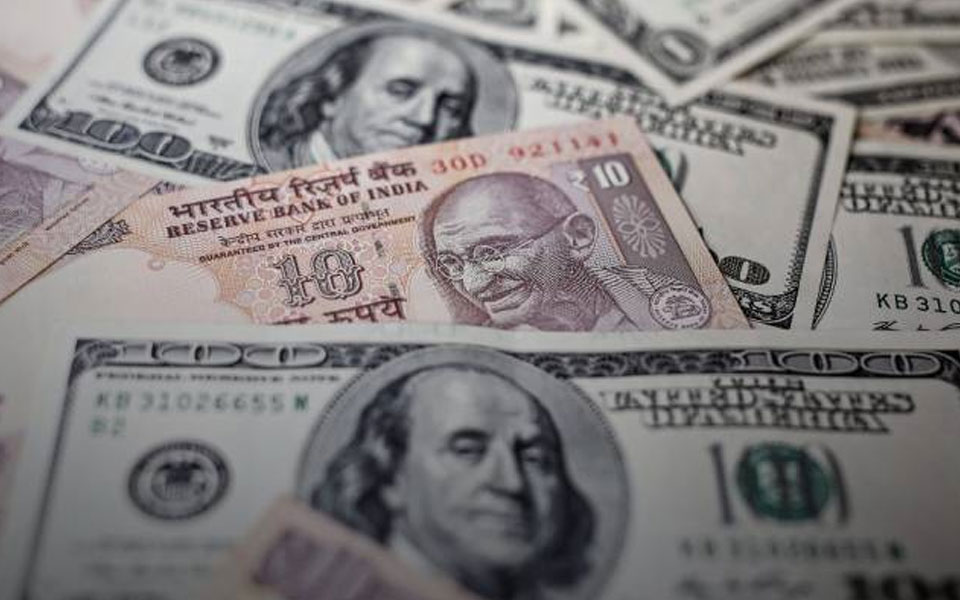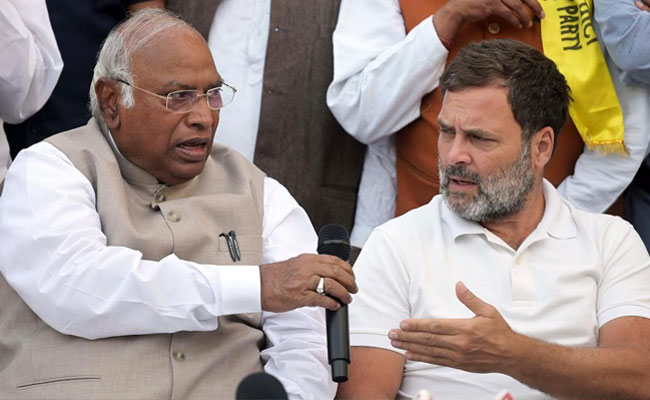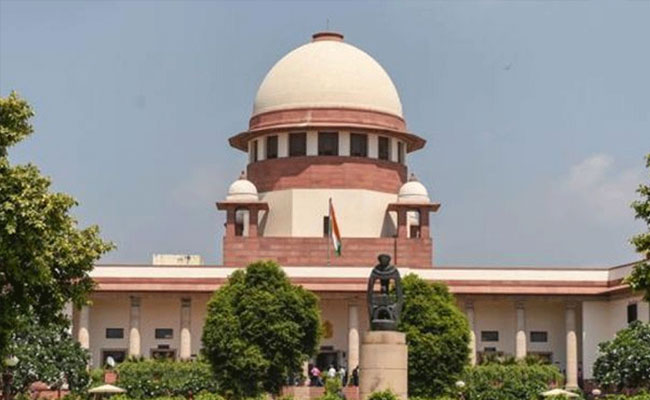Washington, Oct 18: The US could remove India from its currency monitoring list of major trading partners, the Treasury Department has said, citing certain developments and steps being taken by New Delhi which address some of its major concerns.
India for the first time was placed by the US in its currency monitoring list of countries with potentially questionable foreign exchange policies in April along with five other countries China, Germany, Japan, South Korea and Switzerland.
The Department of Treasury maintained the same monitoring list in its latest report released on Wednesday but said if India continues with the same practices as in the last six months, it would be removed from its next bi-annual report.
"India's circumstances have shifted markedly, as the central bank's net sales of foreign exchange over the first six months of 2018 led net purchases over the four quarters through June 2018 to fall to USD 4 billion, or 0.2 per cent of the GDP," the Treasury said in its latest semi-annual Report on Macroeconomic and Foreign Exchange Policies of Major Trading Partners of the US.
This represented a notable change from 2017, when purchases over the first three quarters of the year pushed net purchases of foreign exchange above two per cent of the GDP, it said.
Recent sales have come amidst a turnaround in foreign portfolio flows, as foreign investors pulled portfolio capital out of India (and many other emerging markets) over the first half of the year, it said.
The rupee depreciated by around seven per cent against the dollar and by more than four per cent on a real effective basis in the first half of 2018, the report said.
India has a significant bilateral goods trade surplus with the US, totalling USD 23 billion over the four quarters through June 2018, but India's current account is in deficit at 1.9 per cent of the GDP.
"As a result, India now only meets one of the three criteria from the 2015 Act. If this remains the case at the time of its next report, Treasury would remove India from the monitoring list," the Treasury said.
Observing that India's current account deficit widened in the four quarters through June 2018 to 1.9 per cent of the GDP, following several years of narrowing from its 2012 peak, the Treasury said the current account deficit has been driven by a large and persistent goods trade deficit, which has in turn resulted from substantial gold and petroleum imports.
The goods trade deficit has widened out in the first half to 6.4 per cent of the GDP as oil prices have risen.
The IMF projects the current account deficit to be around 2.5 per cent of the GDP over the medium term as domestic demand strengthens further and favourable growth prospects support investment.
India's goods trade surplus with the US was USD 23 billion for the four quarters through June 2018, it said, adding that India also had a small surplus in services trade with the US of USD 4 billion over the same period.
"India's exports to the US are concentrated in sectors that reflect India's global specialisation (notably pharmaceuticals and IT services), while US exports to India are dominated by key service trade categories, particularly travel and higher education," the report said.
The Treasury praised India for being "exemplary" in publishing its foreign exchange market intervention.
The Reserve Bank of India (RBI) has noted that the value of the rupee is broadly market-determined, with intervention used only during "episodes of undue volatility," it said.
According to the authorities' data, India was generally a net purchaser of foreign exchange from late 2013 to the middle of 2017, as the RBI sought to gradually build a stronger external buffer in the aftermath of the May 2013 "taper tantrum".
Purchases accelerated in the first half of 2017 amidst strong portfolio inflows to India (and many other emerging markets); as a result, cumulative net purchases of foreign exchange exceeded two per cent of the GDP over 2017, it said.
Noting that foreign exchange purchases generally declined in the second half of 2017, and the RBI shifted to selling foreign exchange in the first half of 2018, the Treasury said net purchases of foreign exchange over the past four quarters through June totalled USD 4 billion (0.2 per cent of the GDP), including activity in the forward market.
"Sales of foreign exchange in the first half of this year came in the context of foreign portfolio outflows of USD seven billion, as India experienced outflows (particularly of foreign portfolio debt) that were witnessed across many emerging markets in the second quarter," it said.
This mirrored the pattern of the last few years, in which intervention has typically tracked institutional portfolio flows. India maintains ample reserves according to the IMF metrics for reserve adequacy, particularly given that India maintains some controls on both inbound and outbound flows of private capital.
As of June 2018, foreign currency reserves stood at USD 380 billion, equal to 3.7 times gross short-term external debt, 8 months of import cover, and 14 per cent of the GDP.
"The rupee depreciated 7 per cent against the dollar in the first half of the year, while the real effective exchange rate also reversed its general uptrend from the last few years, depreciating by four per cent," it said.
Let the Truth be known. If you read VB and like VB, please be a VB Supporter and Help us deliver the Truth to one and all.
New Delhi (PTI): The Congress on Friday said Leaders of Opposition Mallikarjun Kharge and Rahul Gandhi have not been invited to the banquet for Russian President Vladimir Putin, and took a swipe at its own MP Shashi Tharoor for accepting the invite.
Congress general secretary in-charge communications Jairam Ramesh said, "There has been speculation whether the Leader of the Opposition in the Lok Sabha and the Leader of the Opposition in the Rajya Sabha have been invited for tonight's official dinner in honour of President Putin. The two LoPs have not been invited."
Congress' media and publicity department head Pawan Khera accused the government of breaking protocols daily and not believing in democratic principles.
"There is no invite to both the LoPs, Mr (Mallikarjun) Kharge and Mr (Rahul) Gandhi. This comes as a surprise but I don't think we should be surprised. This government is known to be breaching all protocols. What else to say, ask the government," he told PTI Videos on the sidelines of an event.
Asked about party MP Tharoor getting invited to the banquet and accepting the invitation, Khera said, "Ask Mr. Tharoor. All of us who are in the party, if our leaders don't get invited and we get invited, we need to question our own conscience and listen to our conscience. Politics has been played in inviting or not inviting people, which in itself is questionable and those who accept such an invite is also questionable," Khera said.
"We would have listened to our voice of conscience," he added.
Earlier, Tharoor said there was a time when the chairman of the external affairs committee was routinely invited but that practice seems to have stopped from some years.
"It has been resumed ...I have been invited, yes. I will definitely go," the chairman of the Parliamentary Standing Committee on External Affairs said.
On the LoPs reportedly not getting an invite, Tharoor said, "I don't know on what basis invitations were sent. I think the custom that usually used to be followed was for a wide representation. Certainly, I remember in the olden days, they used to invite not only the LoPs, (but) various other cross section of representatives of different parties. It conveys a good impression."
"I dont know the basis (of invitation), this is all done by the government, by the protocol by the Rashtrapati Bhawan, what do I know. All I can say I have honoured to have been invited. Of course I will go," Tharoor told reporters in the Parliament House complex.
Gandhi on Thursday had alleged that the government tells visiting foreign dignitaries not to meet the Leader of the Opposition due to its "insecurity".
His remarks had come hours ahead of Putin's two-day visit to India.
Gandhi had said it is a tradition that visiting foreign dignitaries meet the LoP but Prime Minister Narendra Modi and the Ministry of External Affairs were not following this norm.
"Normally the tradition is that those who come from abroad have a meeting with the LoP. This used to happen during (Atal Bihari) Vajpayee ji's time, Manmohan Singh ji's time, it has been a tradition but what happens these days is that when foreign dignitaries come and when I go abroad, the government suggests to them to not meet the LoP," Gandhi had told reporters in Parliament House complex.



_vb_09.jpeg)

